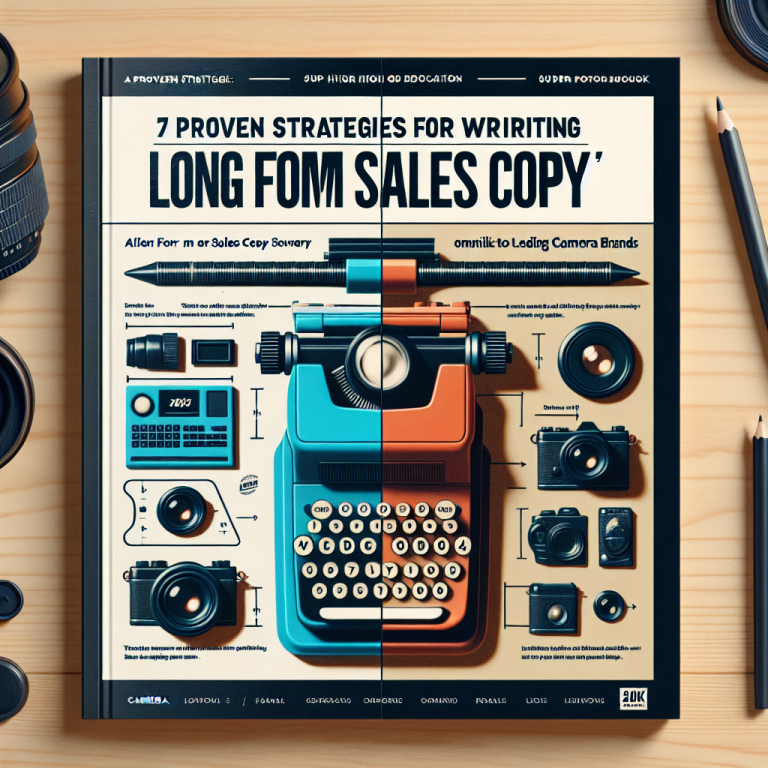How to Start Advertising and Watch Your Business Explode with Growth
Understanding Your Target Audience
Defining Your Customer Persona
So, let’s kick things off with something super important—understanding who your customers are. Trust me, this is crucial. You wouldn’t want to throw a party and invite people who don’t even like the theme, right?
Creating a customer persona is like drafting a blueprint for all your marketing efforts. Write down demographics like age, location, profession, and interests. Get specific! After all, knowing your audience leads to campaigns that actually grab their attention.
Another thing that helped me was doing some online research and surveys. It’s amazing what you can learn! Use tools like social media insights or Google Analytics. These insights are gold for tailoring your advertising to align with what your potential customers actually want.
Identifying Pain Points
Next up, let’s talk about what keeps your audience up at night—pain points. I can’t stress enough how vital this is. If you know what issues your audience faces, you can present your product or service as the solution!
Spend some time chatting with customers, checking out online forums, or look at reviews of similar products to see what frustrations people have. Then, tackle those head-on in your advertising. Your message will resonate, and they’ll feel like you really get them.
It’s like being their knight in shining armor—the more you recognize their struggles, the more they’ll trust you, leading to a loyal customer base. And loyalty, my friend, is what really drives growth!
Customer Behavior Insights
Now, think about how your target audience behaves. This shouldn’t be taken lightly! Knowing where they hang out online and what kind of content they love will take your advertising to the next level.
Use tools like SEMrush or BuzzSumo to see what’s trending in your industry and adapt your strategies accordingly. This can save you time and help you avoid the dreaded advertising flop!
Engage with your audience on social platforms where they’re active. It’s not just about selling—it’s about building relationships. And when you do that, your ads can feel like friendly advice rather than pushy sales pitches.
Choosing the Right Advertising Channels
Exploring Different Platforms
Choosing the right advertising channel is like picking the right spot for your business’s billboard. Each platform has its own vibe and audience, and it’s key to select the ones that align with your goals.
Start with the big players like Facebook, Instagram, and Google Ads. Each has its unique features, and you’ve got to tailor your approach to fit—don’t just slap the same ad everywhere! For instance, Instagram is super visual, so your ads need to be eye-catching.
But also don’t forget about niche platforms or even local advertising opportunities! Depending on your business, something a bit more off the beaten path may resonate hugely with your target audience.
Leveraging Social Media Effectively
Social media is where the fun really happens! It’s a fantastic opportunity to engage and interact with your audience directly. Share updates, but don’t shy away from showing the quirky side of your brand. People love that!
Content is king, but in this case, engagement is the queen! Run contests, ask questions, and respond to comments like your brand is a relatable friend. By forming this connection, your ads will seem less like an intrusion and more like a welcome conversation.
Using paid ads on social media can also amplify your message. Start small, A/B test different ads, and see what works best. Trust me, patience is key here. Over time, you’ll find your groove!
Utilizing Email Marketing
Let’s not overlook the power of email marketing. Sounds old-school? Maybe—but it still packs a punch! An engaged email list can lead to loyal customers and tons of referrals.
Segment your lists based on customer behavior or preferences, and send them tailored content. Think special deals, recommendations, or exclusive previews. By addressing their specific interests, you’re much more likely to get that click!
Also, play around with subject lines. A catchy headline can be the difference between someone opening an email or letting it collect digital dust. Keep it snappy and engaging!
Creating Engaging Ad Content
<h3=Telling a Story
Nobody likes ads that just blurt information. Instead, make your content engaging by telling your brand’s story. It’s like the difference between reading a textbook and a gripping novel. I guarantee people will gladly stick around!
Share your brand’s journey, the challenges you’ve faced, and the joy of serving your customers. This connects with people on an emotional level and creates memorability.
Don’t forget humor, when appropriate! A well-placed funny meme or light-hearted twist can significantly raise your ad’s shareability. Just know your audience and what resonates with them.
Using Eye-Catching Visuals
Visuals are a gamechanger for grabbing attention. A compelling image or video can stop someone mid-scroll and make them engage. You want them to stay intrigued!
Utilize high-quality images and consider using tools like Canva to whip up attention-grabbing graphics. Videos tend to perform exceptionally well too, so don’t sleep on that opportunity!
Oh, and make sure to keep your branding consistent across visuals. This builds recognition, and when people start connecting your visuals with your brand, trust me, the growth will follow.
Crafting Compelling Calls to Action
Your ad should always close with a strong call to action (CTA). This is where you lead your audience to take that next step—be it visiting your website, making a purchase, or signing up for a newsletter.
Use action-oriented language: words like “discover,” “join,” or “try”—these invite interaction. Additionally, consider creating a sense of urgency, such as limited-time offers, to encourage quicker responses.
And remember, keep it straightforward. Don’t overwhelm your audience with too many options—clarity leads to action!
Monitoring and Adjusting Your Ads
Tracking Metrics
Now that you’ve born your advertising child, it’s time to monitor its growth. Tracking performance metrics is essential. Look at reach, engagement, conversion rates, and bounce rates.
Use analytics from various platforms to get the lowdown on what’s working and what’s not. Check-in regularly to see if your ROI is where you expect. If not, make your moves!
Over time, you’ll spot trends, and these insights will guide your future strategies. Data tells a story, and it’s crucial your ads align with what that story implies.
Optimizing Your Advertising Strategy
Based on what you glean from your metrics, it’s important to pivot and optimize. Sometimes, a tiny tweak can lead to significantly better performance.
Test different ad formats, tailor your target audience further, or even shift your messaging based on your audiences’ responses. The market is dynamic, and staying flexible is crucial for successful growth.
Be patient too! Sometimes results take a bit of time to show. But believe me, if you’re persistent and open to change, you’ll see the growth you’re aiming for.
Learning from Feedback
Don’t disregard feedback from your audience. Positive or negative, there’s money to be made in their insights. Encourage reviews, conduct post-purchase surveys, and even reach out through social media.
Embrace constructive criticism! It helps you refine your offerings and makes your customers feel heard, which is essential for building brand loyalty.
Remember, the most successful advertisers listen actively. Engage with customers who comment on your ads—showcase your commitment to their satisfaction.
Conclusion
And there you have it! Advertising isn’t just about reaching out—it’s about building authentic connections and driving growth. Once you understand your audience, choose the right channels, create engaging content, and continually monitor and optimize, you’re well on your way to watching your business explode with growth.
It’s not a sprint; it’s a marathon. Stay persistent and keep learning from your audience, and soon enough, you’ll see your efforts paying off. Happy advertising!
FAQ Section
1. How do I determine my target audience?
Defining your target audience involves researching demographics, interests, and pain points. Create customer personas to better understand whom you’re advertising to.
2. What platforms are best for advertising?
The best platforms depend on where your audience hangs out. Facebook, Instagram, and Google Ads are great starting points, but don’t shy away from niche platforms that fit your market.
3. How can I make my ads more engaging?
To make your ads engaging, tell a story, use eye-catching visuals, and craft compelling calls to action. Emotional connections will draw your audience in!
4. What metrics should I track for my ads?
Key metrics to track include reach, engagement, conversion rates, and return on investment. Use analytics to see which aspects need tweaking!
5. How often should I adjust my advertising strategy?
Regularly assess your ad performance—weekly or bi-weekly is a good schedule. Be prepared to optimize your strategy based on what’s working and what isn’t!









